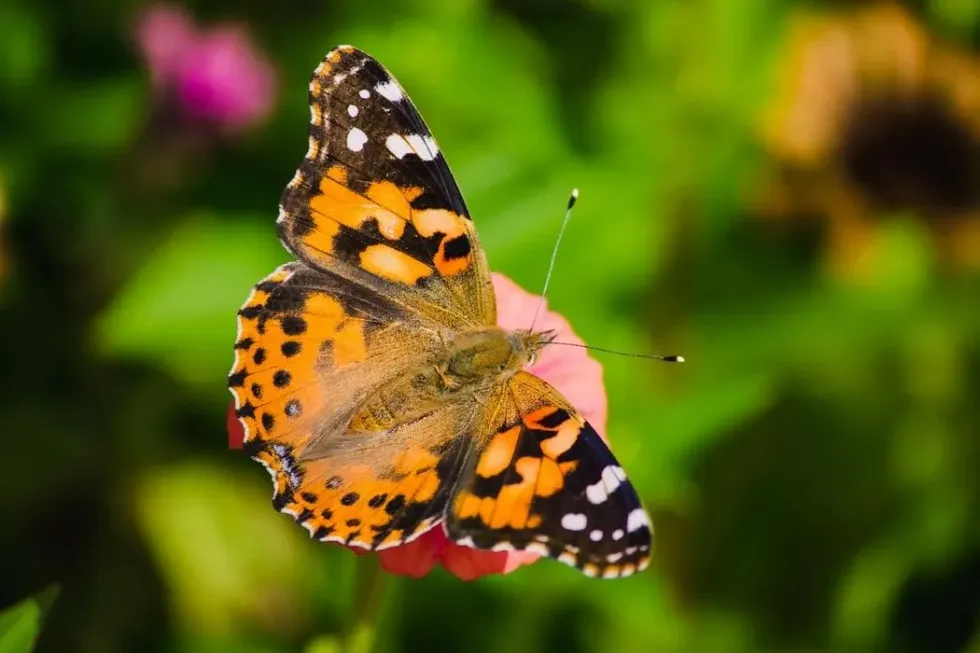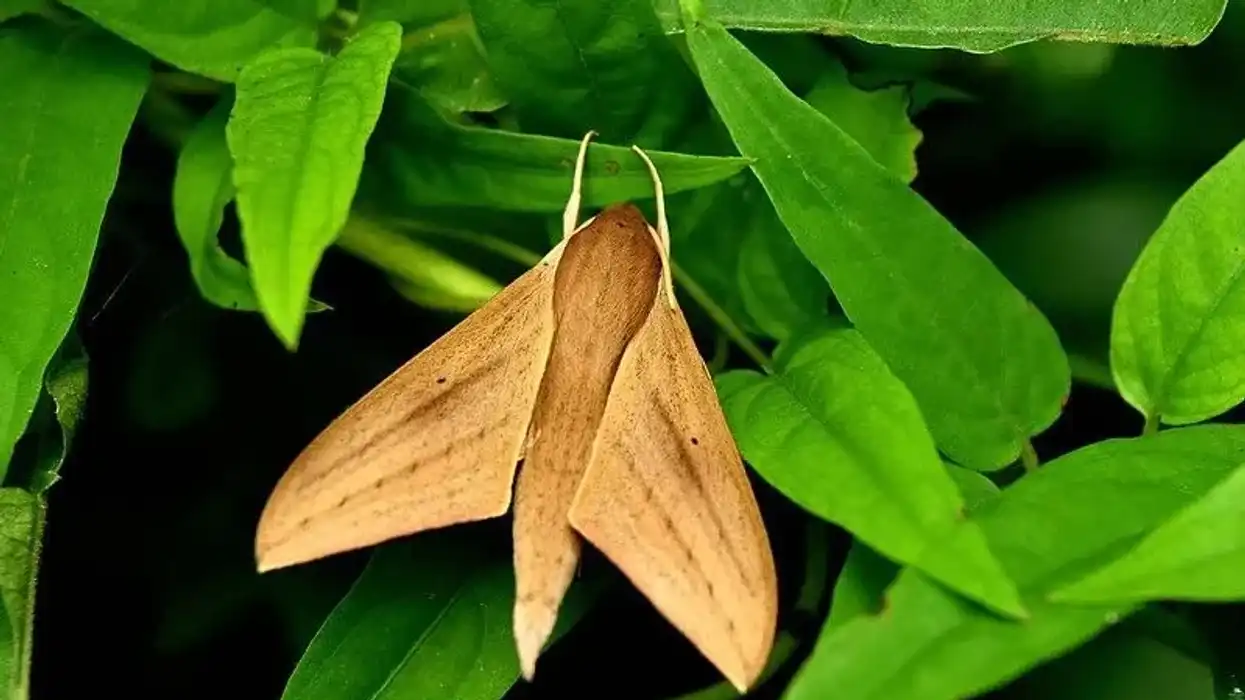The painted lady butterfly, whose scientific name is Vanessa Cardui, is a very commonly found butterfly in all continents apart from Australia and Antarctica. The physical characteristics of a painted lady butterfly truly justify its name, as it appears that an artist has painted the butterfly's wings with watercolors!
The painted lady butterfly migration journey is fascinating. They cover around 9320.5 mi (15,000 km) by mass migrating these long distances every year.
Their journey begins from the cold African regions, passing over Mediterranean parts toward northern Europe, using the wind direction and flow to accelerate their speed.
Since they cannot bear harsh winter conditions, they travel back to warmer regions in the fall. Keep reading the article for more interesting painted lady butterfly facts for kids!
If you liked this article with amazing painted lady butterfly facts, also check out the other articles with interesting facts about the purple emperor butterfly and the viceroy butterfly.
Painted Lady Butterfly Interesting Facts
What type of animal is a Painted Lady Butterfly?
The painted lady butterfly, whose scientific name is Vanessa cardui, is a type of butterfly.
What class of animal does a Painted Lady Butterfly belong to?
The painted lady butterfly belongs to the Insecta class of animals.
How many Painted Lady Butterflies are there in the world?
The painted lady butterfly is a very common and widely distributed butterfly species throughout the world. Therefore, researchers have not yet been able to calculate the exact population of these butterflies.
Where does a Painted Lady Butterfly live?
The painted lady butterfly can be found on every continent except Australia and Antarctica. It is quite widespread in North America and has become naturalized in Africa, Europe, and Asia, as well.
What is a Painted Lady Butterfly's habitat?
Painted lady butterflies are very adaptable and can live almost anywhere, which is why they are one of the most commonly found and widely distributed butterfly species in the world.
While they prefer open areas such as fields and meadows, but can also be found in more natural open areas, such as suburban or agricultural areas or in tropical marshy rainforests or tundra mountain habitats, as well.
Who do Painted Lady Butterflies live with?
The painted lady butterflies mostly migrate in packs but are not known to have solitary lives otherwise. The female butterflies lay eggs and abandon them, while the larva grows on their own. However, the male butterflies are quite territorial when it comes to mating.
How long does a Painted Lady Butterfly live?
The painted lady butterfly life cycle is quite short as it lives for only one year, in the wild.
How do they reproduce?
The painted lady butterfly males are polygynous in nature and mate with multiple female butterflies to ensure population expansion. The male butterflies stay in their territory and wait to encounter females to mate.
Both, male and female butterflies, become sexually mature around five to seven days after the stage of pupation. Interestingly, these butterflies mate during migration as well leading to several generations undertaking migration.
In warmer areas, the larva develops within one and a half months while in colder areas, the larvae take around two months to develop into an adult butterfly.
Mating between male and female butterflies takes place throughout the year except for colder areas when the butterflies cannot properly survive in the harsh months of winter. Painted lady butterfly eggs facts are fascinating, for example, the female lays 500 eggs on average per mating season, after a gestation period of approximately 20-25 days.
What is their conservation status?
The status of the painted lady butterfly has been evaluated by the International Union for Conservation of Nature under the Least Concern category. However, Hence, their population is not considered to be endangered or at risk of extinction, so does not require conservation efforts either.
Painted Lady Butterfly Fun Facts
What do Painted Lady Butterflies look like?

The painted lady butterfly is a very colorful butterfly found in nature, known for its dominant shades of orange and black. The upper parts of their wings are orange-brown in color.
Their forewings are marked with a white stripe, while the wings at the back are dotted with five small black dots. The underside of their wings has brown, grey, and black colored patterns.
The egg laid by these butterflies is light green in color and has 14-19 vertical ribs. The larvae are grey-brown in color, with a yellow stripe running down their body.
How cute are they?
Painted lady butterflies are quite cute! They are definitely one of the most colorful butterflies to be found in nature. Watching these butterflies feed on the nectar of flowers or fly around in open fields will definitely cheer everyone up.
How do they communicate?
The painted lady butterfly mainly communicates with others of its species through the medium of chemicals, sounds, and color. They also interact with each other through physical actions.
An adult painted lady butterfly has compound eyes made up of around 1000 units that help them differentiate between host plants and mates. However, the larva of this species has very poor vision.
How big is a Painted Lady Butterfly?
The average length of an adult painted lady butterfly is 2.0-2.5 in (5-6 cm). The size of its wingspan lies between the range of 2.01-2.87 in (5.1-7.3 cm).
The coyote is almost 10 times bigger than a painted lady butterfly with a height of about 24 in (60 cm).
How fast can Painted Lady Butterflies fly?
Painted lady butterflies can actually fly very fast! They have been noted to cover around 30 mi (48 km) in an hour.
How much does a Painted Lady Butterfly weigh?
While the average weight of a painted lady butterfly is unknown, the usual weight of a male butterfly is approximately 0.017 oz (0.50 g) and the weight of a female butterfly is around 0.018 oz (0.53 g).
What are their male and female names of the species?
There are no separate names to denote the male and female types of the painted lady butterfly species. In fact, the male and female butterfly of this species looks the same in terms of their color pattern, but they can be differentiated by looking at their body structure.
The male butterfly has a thinner abdomen compared to the female butterfly, which has a larger abdomen.
What would you call a baby Painted Lady Butterfly?
There is no separate, unique name to denote a baby Painted lady Butterfly. The eggs laid by a female butterfly are called larva or larvae (plural) in their initial stage. The larva goes through the maturation phases of pupation and becomes the Painted Lady Butterfly Caterpillar before it becomes an adult butterfly.
What do they eat?
Painted lady butterflies are herbivorous in nature and primarily depend on nectar from plants and honeydew for food. The adult butterflies consume food in the form of nectar from medium-sized plants like red clover, milkweeds, aster, ironweed, and thistles.
The larvae of this species eat leaves for food. They also eat bean crops, mint plants, and artichokes, which humans also eat. The larvae eat leaves from plants like thistles, lupine, dwarf nettle, fiddleneck, and daisy plants.
Are they dangerous?
Painted lady butterflies are not poisonous or venomous. They do have spikes on their body, they are not sharp, and do not harm humans or other animals. However, they are targeted by several small predators, so they to try to protect themselves with the help of camouflage.
Would they make a good pet?
Although butterflies do not make great pets in a conventional sense, since you cannot pet or cuddle with them if needed, they do have a great relationship with humans! In fact, the painted lady butterfly and other related species are bred in schools for biology classes.
Students can learn a lot about the life cycle of butterflies by observing the development of a painted lady butterfly in front of their eyes. These butterflies are also released during weddings and memorial events for a dramatic and heartwarming effect.
Did you know...
The painted lady butterfly is the only type of butterfly noted in Iceland!
Like other butterfly species, the painted lady butterfly also vibrates its wings before a flight in order to create more body heat. This allows the insect to warm its muscles and fly quickly when required.
What is the host plant for a Painted Lady Butterfly?
The painted lady butterfly has a unique relationship with many plants. The adult female butterflies lay their egg cluster on a host plant.
Many plants have been noted by scientists which act as hosts to the painted lady egg and larvae. These host plants such as thistles, mallow, aster, milkweed, and hollyhock, are also a source of nutrition for these butterflies.
The painted lady butterfly larvae feed on the host plants and build silken webs on the plants after hatching. They go through the entire process of transformation to an adult butterfly, while using the host plant as a source of food.
These butterflies are also an important agent of pollination for these plants and drink in their nectar as well.
Names for the Painted Lady Butterfly
The painted lady butterfly was known as the 'Cosmopolitan' in North America because of its widespread distribution throughout the globe! Since it prefers to drink nectar as food from thistle plants, they are also known as thistle butterflies.
Here at Kidadl, we have carefully created lots of interesting family-friendly animal facts for everyone to discover! Learn more about some other arthropods including the monarch butterfly and the luna moth.
You can even occupy yourself at home by drawing one of our painted lady butterfly coloring pages.










